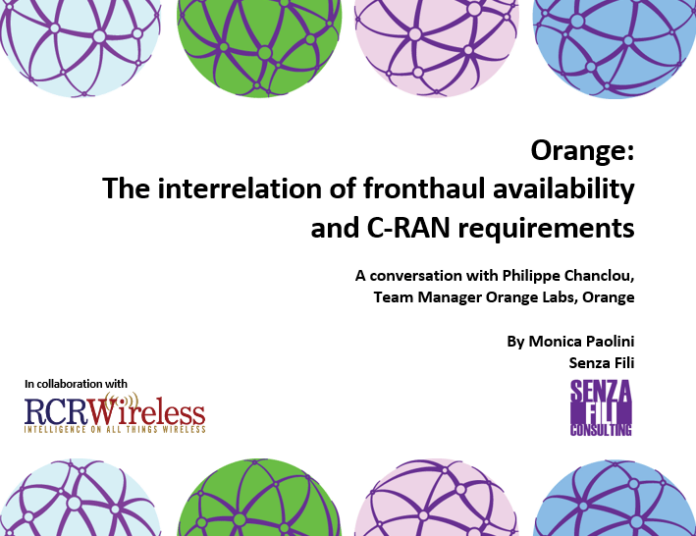A conversation with Philippe Chanclou, team manager Orange Labs
Philippe Chanclou, team manager at Orange Labs in France, talked to us about how to approach the transition to C-RAN in LTE networks that have to be ready for 5G, and yet accommodate legacy 2G and 3G technologies. “We don’t know exactly what 5G will be, but we know that in terms of capacity and in terms of the way to achieve an efficient and constant bitrate to the customers in the cells, we need to rely on CoMP. We know that efficient CoMP processing requires that all the BBUs are in the same place. And fronthaul is the solution to achieve this in an efficient 5G network,” he told us.
Fronthaul will have to evolve to meet the growing traffic volumes. “We also have to consider the evolution of fronthaul for 5G. We don’t know what [the new fronthaul] interface will be. It could be CPRI with a high bitrate or something completely different, but we want to be sure that our fronthaul network choice today will be compatible. We consider that our technology choices to achieve this network segment with fiber (based on passive infrastructure, with optionally low latency active equipment) and microwave are natively compatible with any future 5G implementation, and for that the solution is futureproof.
“The option we take in the evolution of the C‑RAN is to define the centralized RAN for all radio access technologies in one antenna site,” Chanclou added. “We don’t focus on C‑RAN for only 3G or 4G; we try to focus on centralized RAN on the antenna site. If you have 2G, 3G and 4G at this antenna site, you try to define a fronthaul solution that supports the link between the BBU hotel and the RRHs for all mobile technology generations. This opens the way to building a solution that will also be compatible for 5G in terms of available resources using either fiber or microwave.”
Download the full interview or watch the video to hear about Chanclou’s insight into Orange C-RAN trials and evolution to V-RAN with 5G.
This conversation will be included in the Senza Fili report “Charting the path to RAN virtualization: C-RAN, fronthaul and HetNets” that will be published on Feb. 9, 2015. If you would like to receive a complimentary copy of the report, let us know.

